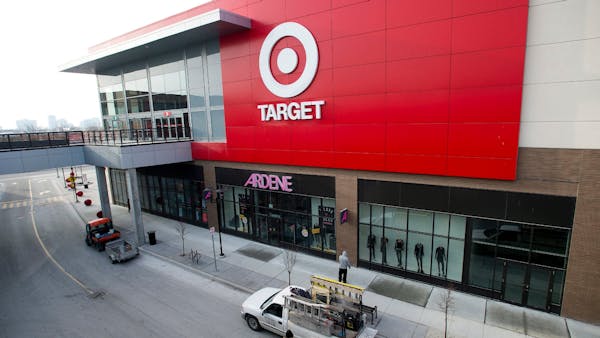Target has dipped its toe back into Canadian waters.
Nearly a decade after Target made an abrupt exit from Canada, closing more than 100 stores, the Minneapolis retailer has started to sell its popular kids' clothing brand Cat & Jack in Hudson's Bay department stores. The venture so far is a success and Target announced Monday it will expand its selection of Cat & Jack in Canada to include swimwear, shoes and outerwear as it tests the wholesale waters in other countries.
It's the first time Target has allowed one of its guarded "owned brands" to be distributed outside its stores. On Monday, Target hinted the Hudson's Bay partnership could be just the start of its international wholesale aspirations.
Since the Cat & Jack collection launched at Hudson's Bay in March, customers have bought more kids' apparel each shopping trip with a 15% increase in their basket size.
"It's been so exciting to see the way Canadian consumers have responded to the exceptional value Cat & Jack offers," said Christina Hennington, Target's chief growth officer, in a Monday blog post. "That combination of amazing design, high quality and great prices sets Target's owned brands apart, and we're pleased to extend these brands to more consumers outside of our home market."
The company is fielding interest from retailers in other parts of the world including in Europe and the Americas to sell its private label products.
Target's private-label — or owned — brands generate more than $30 billion in annual sales for the company and help it differentiate itself from other discount retailers. These products are generally cheaper to consumers than name brand competitors and are a way for retailers to deepen customers' store loyalty while also earning better margins.
Target's success with its store brands, which has ranged from brands like its grocery label Good & Gather to its kitchen supplies brand Figmint, has led the market.
Launched in 2016, Cat & Jack is now a $3 billion brand. Target leaders have said it's the largest kids brand in America, with more than 300 million units of Cat & Jack sold each year — the equivalent of about eight items for every American child under the age of 12.
"The category to me makes sense," said Anne Mezzenga, co-founder of Twin Cities-based retail industry blog and podcast Omni Talk. "I do think that the design, the quality and the price point of the Cat & Jack brand does have a place there."
Outside of Cat & Jack, it will be a little harder for Target to identify another owned brand that has the same brand power to do well in overseas markets, she said. Target will also need to invest considerable resources to continue to grow its wholesale business, Mezzenga said.
In 2015, Target had to stage a hasty exit from Canada and close 133 new stores after it faced more than $2 billion in losses in less than two years. About 17,600 Canadian workers and 550 employees in the Twin Cities were let go in the wake of the departure.
Target's failure in Canada has been attributed to a range of issues including frequent supply chain and stocking problems that resulted in empty shelves and a rushed market entry that was too big and too fast.
Selling private-label brands at retailers in other countries might be a relatively safe way for Target to expand internationally.
Beginning in mid March, a Cat & Jack assortment of kids tanks, shorts and other clothing has been available at all of Hudson's Bay 82 Canadian stores with prices ranging from $7 to $35 a piece.
"In everything we do, our focus is always customer-first," said Hudson's Bay CEO Liz Rodbell, in a statement. "Now more than ever families are looking for quality, value and sustainability when shopping for their children. And when kids get dressed they want to be comfortable, be active, and have fun in their clothes. Cat & Jack delivers on all fronts."
Hudson's Bay, which is under the umbrella of the Hudson's Bay Co. that also owns Saks Fifth Avenue, has struggled in recent years to stay relevant and recently announced a round of layoffs.
Target has also had its challenges as more people are cutting back on discretionary spending. In March, Target reported a 4.4% decline in comparable sales in the fourth quarter and a 3.7% dip in comparable sales for its fiscal year.

Delta hiked fares for solo travelers, until Twin Cities travel experts caught the change

In first speech back, UnitedHealth's new CEO pledges to review hot-button issues

A child had measles at Mall of America, concerning state health officials who don't know source

Ramstad: Gov. Walz, things are not getting done in Minnesota

